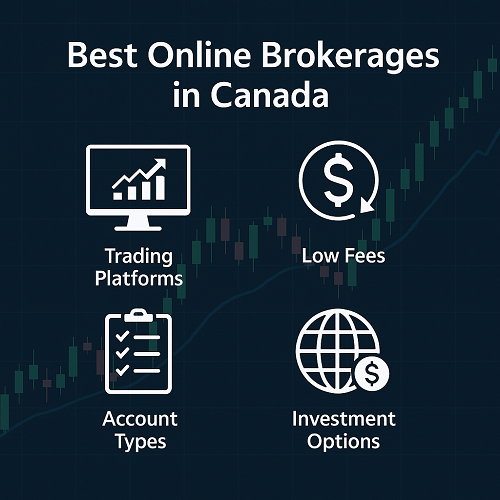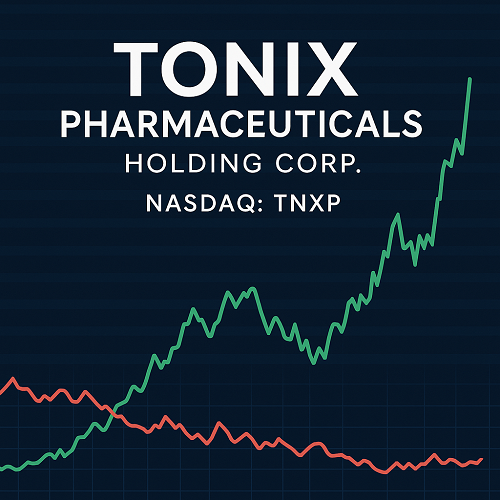Meta Platforms, Inc. (NASDAQ: META) remains one of the most influential companies in the global technology sector, commanding leadership across social media, digital advertising, and increasingly, artificial intelligence (AI). Since its rebranding from Facebook in 2021, Meta has evolved into a diversified digital ecosystem encompassing Facebook, Instagram, WhatsApp, Messenger, and its metaverse and AI initiatives under Reality Labs.
As of 2025, META stock continues to reflect both exceptional growth potential and heightened volatility. Investors face a dual narrative: on one hand, a highly profitable digital advertising giant, and on the other, a company investing heavily in speculative long-term technologies such as virtual reality (VR), augmented reality (AR), and advanced AI infrastructure.
This analysis explores Meta’s fundamentals, valuation, financial health, trading dynamics, catalysts, and risks to provide a comprehensive view for institutional investors, analysts, and sophisticated retail traders.
1. Company Overview
1.1 History and Transformation
Founded in 2004 by Mark Zuckerberg and co-founders at Harvard University, Facebook began as a social networking platform. Over the next two decades, it expanded into a multi-platform empire, acquiring Instagram in 2012 and WhatsApp in 2014, while launching Messenger as a standalone platform.
In 2021, the company rebranded to Meta Platforms, Inc., signaling a strategic pivot toward the metaverse — a future vision of interconnected virtual spaces. While the metaverse remains aspirational, Meta’s rebranding reflects its intention to move beyond social networking into hardware, immersive experiences, and artificial intelligence.
1.2 Core Platforms and Ecosystem
Meta’s product ecosystem spans:
- Facebook: The original platform, still among the world’s largest social networks by daily active users (DAUs).
- Instagram: A visual-first app central to Meta’s advertising business and influencer economy.
- WhatsApp: The world’s leading messaging platform, with untapped monetization potential.
- Messenger: A communication tool integrated with Facebook and the broader Meta ad ecosystem.
- Reality Labs: Meta’s AR/VR division responsible for Quest headsets and Horizon Worlds.
1.3 Mission and Strategic Direction
Meta’s mission is “to give people the power to build community and bring the world closer together.” Its strategy has evolved toward AI-driven engagement, monetization of short-form video (Reels), and building an AI infrastructure capable of powering billions of daily interactions and ad impressions.
2. Business Model and Revenue Streams
2.1 Advertising Dominance
Meta’s revenue model is primarily built on advertising — over 95% of total revenue comes from selling digital ad placements across Facebook, Instagram, and its Audience Network. Advertisers leverage Meta’s unmatched targeting capabilities, data scale, and global reach.
Key strengths include:
- Massive active user base: Over 3 billion monthly active users across platforms.
- Data-driven targeting: Machine learning models enhance ad relevance and ROI.
- Cross-platform integration: Shared identity and targeting systems across apps.
2.2 Diversifying Beyond Ads
Meta’s secondary revenue streams include:
- Reality Labs hardware sales (Quest VR headsets, smart glasses).
- Developer and creator tools, including Meta Business Suite and subscription features.
- Payment and commerce integration (especially via WhatsApp and Instagram Shops).
Though currently a small percentage of total revenue, these verticals represent Meta’s long-term growth diversification strategy.
2.3 AI and Infrastructure Investment
Meta is investing heavily in AI supercomputing to support its ad relevance models, recommendation engines, and generative AI tools for creators. The company’s AI infrastructure rivals those of Amazon, Microsoft, and Google — positioning Meta as both a technology and media company.
3. Financial and Valuation Analysis
3.1 Revenue and Earnings Growth
Meta’s financial trajectory has rebounded sharply post-2022, when ad spend was hit by macroeconomic uncertainty and Apple’s privacy changes (ATT). Through cost discipline and strategic efficiency measures, Meta has returned to double-digit revenue growth.
- Revenue (2024): Estimated at over $140 billion.
- Operating margin: Recovered to ~35% after cost cuts in 2023 (“Year of Efficiency”).
- EPS growth: Driven by both topline recovery and significant expense management.
3.2 Capital Expenditure and Free Cash Flow
Meta’s capex spending has surged, primarily directed toward AI data centers and metaverse development. Despite this, free cash flow remains robust due to high-margin advertising operations.
- Capex (2024): Estimated $35–40 billion, focused on AI infrastructure.
- Free cash flow: Strong, though slightly compressed by investment intensity.
3.3 Valuation Metrics
While Meta’s stock has seen significant appreciation since 2023, valuations remain within range of other large-cap tech peers:
- Forward P/E: ~25–28x (moderate relative to growth).
- PEG ratio: ~1.5, reflecting balanced growth-to-valuation alignment.
- Market capitalization: Exceeding $1 trillion, making Meta a top-10 global company by market cap.
3.4 Balance Sheet Strength
Meta’s balance sheet remains fortress-like:
- No long-term debt, a rarity among mega-cap peers.
- Cash & equivalents: Estimated above $60 billion.
- Strong liquidity: Enables continuous buybacks and R&D without financing pressure.
4. Technical and Market Analysis
4.1 Price Performance
META stock has demonstrated resilience, rebounding from 2022 lows to record highs through 2024–2025. The recovery reflects both investor confidence in advertising growth and optimism around AI-driven monetization.
4.2 Technical Indicators
- Long-term trend: Bullish, supported by 50- and 200-day moving averages.
- Support levels: Around $420–$450 (previous breakout zones).
- Resistance levels: Psychological levels near $600 and above.
- Volatility: Elevated due to capex guidance revisions and AI narratives.
4.3 Institutional Positioning
Institutional investors continue to hold significant stakes. Funds such as Vanguard, BlackRock, and Fidelity are among top holders. Meta remains a core component of most large-cap growth and technology ETFs.
5. Growth Catalysts and Future Drivers
5.1 AI-Powered Advertising Renaissance
Meta’s integration of AI in advertising optimization has materially improved ROI for advertisers. Machine learning models trained on billions of signals allow better targeting despite Apple’s privacy limitations.
The rollout of Advantage+ campaigns and AI-based creative generation continues to drive engagement and spend.
5.2 Monetizing Reels and Short-Form Video
Meta has successfully transitioned user engagement to Reels, competing with TikTok and YouTube Shorts. Monetization per minute continues to improve, supported by AI-based recommendation algorithms that keep users engaged longer.
5.3 WhatsApp and Messaging Monetization
WhatsApp, with over 2 billion users, remains one of Meta’s most under-monetized assets. Features like WhatsApp Business API and payment integrations in emerging markets could transform it into a major revenue driver over the next five years.
5.4 Metaverse and AR/VR Expansion
Reality Labs’ financial losses remain substantial, but Meta’s long-term metaverse vision positions it as a potential leader in next-generation computing. Quest headsets and Horizon Worlds form the foundation of this ecosystem, though profitability remains years away.
5.5 Operational Efficiency
Mark Zuckerberg’s “Year of Efficiency” marked a cultural shift within Meta. Streamlined operations, leaner staffing, and prioritization of profitable segments improved investor confidence and sustained margins despite high R&D costs.
6. Competitive Landscape
6.1 Key Competitors
- Alphabet (Google): Competes directly in digital advertising and AI.
- ByteDance (TikTok): Core rival in short-form video and youth engagement.
- Apple: Competes indirectly through ecosystem control and privacy policies.
- Snap and X (formerly Twitter): Smaller rivals in social networking and media.
6.2 Meta’s Competitive Advantages
- Network effects: Billions of users and interlinked platforms.
- Data and AI infrastructure: Among the largest AI compute clusters in the world.
- Brand diversity: Multiple revenue sources under one corporate structure.
- Financial strength: Enabling aggressive R&D without external financing.
7. Risk Factors
7.1 Regulatory and Legal Exposure
Meta faces ongoing regulatory scrutiny in the U.S., EU, and other regions for antitrust, privacy, and youth safety concerns. Regulatory pressure could limit data usage or force structural changes over time.
7.2 Capital Intensity of AI and Metaverse
Massive capital expenditures for AI and metaverse projects could reduce free cash flow if monetization lags expectations. Investors remain sensitive to rising expense forecasts.
7.3 Competitive Threats
TikTok continues to dominate Gen Z engagement, while Google’s YouTube retains video monetization leadership. Apple’s privacy framework (App Tracking Transparency) continues to constrain Meta’s ad targeting capabilities.
7.4 Macroeconomic Sensitivity
Advertising revenue is cyclical, sensitive to global economic slowdowns and fluctuations in small-business marketing spend.
7.5 Reputational and Platform Risks
User trust and content moderation remain challenges. Political polarization, misinformation, and mental health issues among youth can affect engagement and policy perception.
8. Investment Outlook and Strategy
8.1 Base Case (2025–2026)
Meta continues to grow ad revenue in the mid-teens, supported by AI-driven efficiency and incremental monetization of messaging. Reality Labs remains a drag on earnings but provides long-term optionality. Under this scenario, META sustains moderate multiple expansion with 10–15% upside over the next 12 months.
8.2 Bullish Case
Accelerated monetization of WhatsApp and Reels, coupled with stabilization of Reality Labs losses, could drive stronger EPS growth and justify premium multiples. In this scenario, META could outperform other mega-cap peers, with potential 20–30% appreciation.
8.3 Bearish Case
If AI spending accelerates faster than revenue growth or if global ad markets soften, valuation compression could follow. Prolonged regulatory action could also weigh on sentiment.
8.4 Investor Suitability
META remains suited for:
- Growth investors seeking exposure to AI and digital advertising.
- Long-term institutional portfolios focused on quality tech assets.
- Traders capitalizing on volatility from earnings and guidance changes.
Risk-averse investors should monitor expense trends and maintain diversified exposure.
9. Conclusion
Meta Platforms remains one of the most formidable players in global technology. Its dominance in social media and digital advertising, combined with strategic investments in AI and immersive technologies, position it at the center of multiple transformative trends.
Yet, investors must balance near-term profitability with long-term capital intensity. The dual narrative — high-margin advertising powerhouse versus speculative metaverse visionary — defines Meta’s investment story in 2025.
For disciplined investors with a medium- to long-term horizon, META represents a compelling blend of innovation, cash generation, and growth potential, albeit accompanied by volatility and regulatory risk.
Bottom line: Meta Platforms (META) remains a core growth holding with asymmetric upside potential, provided the company maintains operational discipline and continues translating its technological investments into shareholder value.





 XAUT-USD
XAUT-USD  AMD
AMD  MARA
MARA  SHOP
SHOP  BULL
BULL  CL=F
CL=F